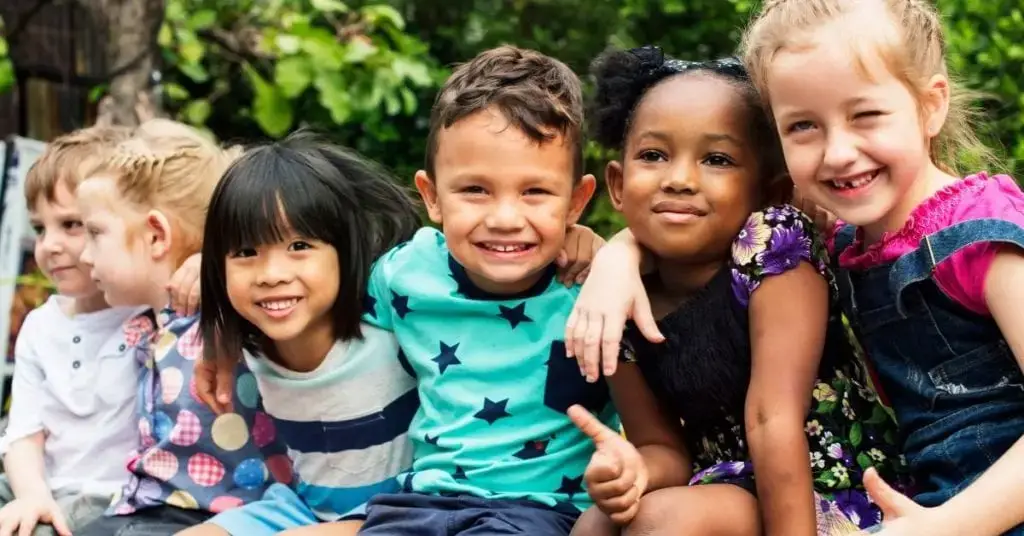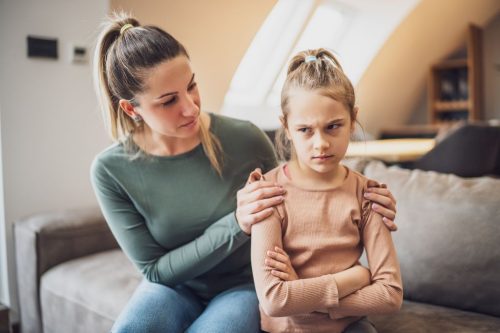Imagine a classroom filled with children from all walks of life—some with different skin tones, some speaking different languages, and others with unique ways of learning. Each child is a world of their own, bringing a piece of their culture, background, and experiences to the shared space. This mosaic of diversity is not just about differences; it’s about the richness that these differences bring to the collective experience.
Diversity among kids is like a vibrant garden, where every flower blooms in its own time, shape, and color. When nurtured, this diversity creates an environment where children learn to appreciate and celebrate the uniqueness of each other. As parents and educators, our role is to help kids see these differences not as barriers, but as bridges to understanding, collaboration, and empathy. By fostering this appreciation for diversity early on, we lay the groundwork for a future diverse workforce that thrives on creativity, innovation, and community engagement.
Diversity Definition for Kids
So, what exactly is diversity? In simple terms, diversity means that people are different from each other in many ways. These differences can include things like skin color, language, culture, family background, abilities, gender identity, and even the things they like or dislike.
For kids, understanding diversity starts with recognizing that not everyone looks the same, acts the same, or thinks the same—and that’s okay! Diversity is what makes the world an interesting place. It’s like a puzzle where every piece is different, but when put together, they create a beautiful picture.

Inclusion and Diversity in Education
In schools, diversity is all around us, and it’s crucial that every child feels included, no matter their background or abilities. Inclusion means that every student, regardless of their differences, has the opportunity to participate fully in school life. This includes being in the same classroom, participating in the same activities, and having access to the same learning opportunities.
When schools embrace both diversity and inclusion, they create an inclusive environment where all students feel valued and respected. This approach helps children learn that everyone has something special to contribute, and it encourages them to appreciate those differences.
Diversity in education isn’t just about having a mix of students from different backgrounds. It’s also about how we teach children to understand and respect those differences. This can be done through lessons that highlight various cultures, histories, and perspectives, as well as by encouraging open conversations about diversity and inclusion. Ensuring health equity in education means providing all students with access to quality education regardless of their background.
Why Awareness of Diversity is Beneficial to Collaboration
When children are aware of diversity, they learn that working with others who are different from them can lead to great things. Collaboration is a key skill that kids need as they grow up, and being aware of diversity helps them become better collaborators. Community relations play a crucial role in fostering collaboration and building strong partnerships among diverse groups.
Think about a group project where each child brings their unique perspective to the table. One child might have a creative way of thinking, while another might be great at organizing tasks. When they work together, they can create something much better than if they were all the same.
Awareness of diversity also teaches kids to be open-minded and empathetic. They learn to listen to others’ ideas, respect different viewpoints, and find common ground. These are essential skills not just for school, but for life.
Preschool Diversity Activities
Teaching diversity in preschool can be both fun and educational. Here are some activities and games that promote diversity and inclusion among young children. Organizations often create inclusive activities and support systems, such as employee resource groups, to foster a sense of community and belonging:
1.Cultural Dress-Up Day
Have a day where children can come to preschool dressed in traditional clothing from their culture. This allows them to share a part of their heritage with their classmates.

2. Story Time with Diverse Books
Reading diverse books is one of the best ways to introduce young children to different cultures, backgrounds, and experiences. Here are the top 10 diversity preschool books that can be a great addition to your child’s or classroom’s library:
- “The Colors of Us” by Karen Katz This book celebrates the diversity of skin tones, showing children that there are many beautiful shades in the world. It’s a great way to start a conversation about race and individuality.
- “Last Stop on Market Street” by Matt de la Peña This story follows a young boy named CJ and his grandmother as they ride the bus through the city. Along the way, CJ learns to appreciate the beauty in the everyday and the diverse world around him.
- “All Are Welcome” by Alexandra Penfold This book portrays a diverse school where all children are welcomed and celebrated. It’s a powerful message of inclusion and belonging.
- “Julian Is a Mermaid” by Jessica Love A story about a young boy who dreams of becoming a mermaid, this book celebrates individuality, self-expression, and acceptance.
- “The Name Jar” by Yangsook Choi This book tells the story of a young Korean girl who is unsure about using her real name in her new American school. It highlights the importance of cultural identity and self-acceptance.
- “We’re Different, We’re the Same” by Bobbi Kates Featuring the beloved characters from Sesame Street, this book teaches children that while we may look different on the outside, we are all the same on the inside.
- “A Big Mooncake for Little Star” by Grace Lin Inspired by the Mid-Autumn Festival, this story weaves cultural tradition with a sweet tale about a mother and daughter, celebrating family and heritage.
- “The Day You Begin” by Jacqueline Woodson This book is about feeling different and finding the courage to share your unique story. It’s a gentle reminder that everyone’s story is valuable and worth sharing.
- “Hair Love” by Matthew A. Cherry This touching story celebrates the relationship between a father and his daughter as they work together to style her natural hair. It’s a joyful celebration of love, family, and cultural pride.
- “I Am Enough” by Grace Byers A poetic affirmation that encourages young readers to love themselves and recognize their worth, this book celebrates the beauty of diversity and self-confidence.
3. Music and Dance from Around the World
Introduce children to music and dance from different cultures. This can be a fun way for them to experience and appreciate diversity.
4. Diverse Art Projects
Have children create art that reflects different cultures. For example, they could make masks, pottery, or paintings inspired by art from around the world.
5. Celebrating Different Holidays
Teach children about holidays from various cultures, and celebrate them together. This helps children learn about different traditions and customs.
6. Language Exploration
Introduce children to basic words or phrases in different languages. This can be done through songs, games, or simple conversations.
7. Diversity Collage
Have children create a collage that represents diversity. They can use pictures, drawings, and other materials to express what diversity means to them.
8. Diversity Games for Preschoolers
Engaging in games is a fantastic way to teach children about diversity in a playful and interactive manner. Here are some diversity-themed games for preschoolers:
- Multicultural Matching Game: Create a matching game using cards that feature children from different cultures in traditional clothing, flags of various countries, or diverse foods. The goal is for children to match pairs while learning about different cultures.
- Who Am I? Game: In this game, each child takes turns wearing a headband with a picture card that represents a cultural symbol, food, or person. The other children give clues to help them guess what’s on their card. This game fosters curiosity and knowledge about various cultures.
- Around the World in a Day: Set up different stations around the room, each representing a different country. Children can “travel” from station to station, engaging in an activity related to that country, such as trying on traditional clothing, tasting a snack, or playing a cultural game.
- Diversity Bingo: Create Bingo cards with pictures representing different cultures, foods, languages, or traditions. As you call out the items, children mark them off on their cards. The first one to complete a row wins, and everyone learns something new about diversity along the way.
- Cultural Cooking Class: Turn snack time into a mini cultural cooking class where children help prepare simple recipes from different cultures. This hands-on experience can be both educational and delicious!
- Friendship Chain: Have each child decorate a paper link with their name and a drawing that represents something special about them. Link all the pieces together to create a friendship chain that symbolizes unity and diversity.
- Faces of Diversity Puzzle: Create a large puzzle featuring diverse faces from around the world. As the children work together to complete the puzzle, discuss the different features and backgrounds represented in the faces.
- Cultural Music Chairs: Play a version of musical chairs using music from different cultures. When the music stops, the child who remains without a chair can share something interesting they learned about the culture the music represents.
- Inclusive Block Play: During block playtime, introduce figures and dolls that represent different cultures, abilities, and backgrounds. Encourage the children to build inclusive communities with their blocks, integrating these diverse figures.
- “What Makes Us Unique?” Game: In this circle time activity, each child takes a turn sharing one unique thing about themselves, such as a special talent, a favorite tradition, or something they love about their family. This game helps children appreciate their own uniqueness while learning about their peers.
9. Diversity Show-and-Tell
Encourage children to bring in an item from home that represents their culture or something special about their family. During show-and-tell, they can explain the significance of the item and share a piece of their heritage with the class.
10.Global Map Exploration
Display a large map of the world and use stickers or pins to mark where different cultures and traditions come from. As you read stories or engage in activities related to a specific culture, add a marker to the map. This helps children visualize the diversity of the world.
Diversity, Acceptance, and the Role of Parents
Parents play a critical role in teaching their children about diversity and acceptance. By modeling inclusive behavior, engaging in open conversations about differences, and providing opportunities for their children to interact with diverse groups of people, parents can lay the foundation for a more accepting future. Discussing leadership roles such as chief executive officer and vice president can further emphasize the importance of diversity and inclusion in leadership.

Be a Role Model
Children are keen observers and often emulate their parents’ behavior. By demonstrating acceptance and working to advance diversity in your own actions—whether it’s by being respectful to others, celebrating cultural differences, or standing up against discrimination—you set a powerful example for your child.
Have Honest Conversations
Don’t shy away from discussing diversity and acceptance with your child. Answer their questions honestly, and encourage curiosity about different cultures, languages, national origin, and traditions. These conversations can help your child develop a deeper understanding and appreciation of the diverse world around them.
Expose Children to Diversity
Take opportunities to expose your child to diverse experiences. This could be through attending cultural festivals, trying foods from different cuisines, or participating in community events that celebrate diversity.
Engaging in professional development activities, such as those offered by employee resource groups (ERGs), can also promote diversity and inclusion.
Create a Library with Diverse Characters
Ensure that your child’s bookshelf includes books that represent a variety of cultures, abilities, family structures, and sexual orientation. Reading these books together can spark important conversations about acceptance and empathy.
Encourage Friendships Across Differences
Encourage your child to build friendships with peers from different backgrounds. These relationships can provide valuable lessons in acceptance and broaden your child’s understanding of the world. Fostering inclusive relationships across all levels is essential for the entire organization to effectively track and manage diversity, equity, and inclusion efforts.
Address Biases and Stereotypes
When your child encounters stereotypes or biases, either in media or in real life, take the time to discuss them. Explain why these ideas are harmful and how they can be challenged through acceptance, understanding, and promoting diversity, equity, and inclusion.
Celebrate Your Own Diversity
Share your own family’s cultural background, traditions, and values with your child to create a welcoming environment. This helps them appreciate their own identity while learning to value the identities of others.
The Impact of Acceptance on Society
When children are taught to embrace diversity and practice acceptance, the ripple effect can be profound. A society built on these values is one where people from all walks of life, including families, can coexist peacefully, support one another, and work together to solve the challenges that arise.
In such a society, differences are seen not as obstacles but as opportunities for learning and growth. People are more likely to come together to collaborate, innovate, and create positive change when they feel accepted and valued for who they are.
Focusing on diversity and acceptance helps break down the barriers of prejudice, discrimination, and inequality. It fosters a world where everyone, including families, has the chance to succeed, regardless of their background, and where justice and fairness prevail.
Diversity and acceptance are essential components of a healthy, thriving society. By teaching our children to value and celebrate differences, we are laying the groundwork for a more inclusive and empathetic world. As parents, educators, and community members, we have the power to shape the future by instilling these values in the next generation.
It is through our collective efforts that we can build a world where every child and their families feel seen, heard, and valued—no matter who they are or where they come from. By embracing diversity and practicing acceptance, we are not just enriching our own lives but also paving the way for a brighter, more harmonious future for all.
Dr. Roseann is a mental health expert in Neurodivergence who frequently is in the media:
- Think Inclusive How Families Can Support Twice Exceptional Children
- Insights to Live By (Podcast) Parenting for Mental Wellness
- Light from the Rabbit Hole Podcast Destigmatizing Mental Health
Always remember… “Calm Brain, Happy Family™”
Disclaimer: This article is not intended to give health advice and it is recommended to consult with a physician before beginning any new wellness regime. *The effectiveness of diagnosis and treatment vary by patient and condition. Dr. Roseann Capanna-Hodge, LLC does not guarantee certain results.
Are you looking for SOLUTIONS for your struggling child or teen?
Dr. Roseann and her team are all about science-backed solutions, so you are in the right place!
Grab your complimentary copy of
Dr. Roseann is a Children’s Mental Health Expert and Licensed Therapist who has been featured in/on hundreds of media outlets including The Mel Robbins Show, CBS, NBC, PIX11 NYC, Today, FORBES, CNN, The New York Times, The Washington Post, Business Insider, Women’s Day, Healthline, CNET, Parade Magazine and PARENTS. FORBES called her, “A thought leader in children’s mental health.”

She coined the terms, “Re-entry panic syndrome” and “eco-anxiety” and is a frequent contributor to media on mental health.
Dr. Roseann Capanna-Hodge has three decades of experience in working with children, teens and their families with attention-deficit hyperactivity disorder (ADHD), autism, concussion, dyslexia and learning disability, anxiety, Obsessive Compulsive Disorder (OCD), depression and mood disorder, Lyme Disease, and PANS/PANDAS using science-backed natural mental health solutions such as supplements, magnesium, nutrition, QEEG Brain maps, neurofeedback, PEMF, psychotherapy and other non-medication approaches.
She is the author of three bestselling books, It’s Gonna Be OK!: Proven Ways to Improve Your Child’s Mental Health, The Teletherapy Toolkit, and Brain Under Attack. Dr. Roseann is known for offering a message of hope through science-endorsed methods that promote a calm brain.
Her trademarked BrainBehaviorResetⓇ Program and It’s Gonna be OK!Ⓡ Podcast has been a cornerstone for thousands of parents facing mental health, behavioral or neurodevelopmental challenges.
She is the founder and director of The Global Institute of Children’s Mental Health, Neurotastic™Brain Formulas and Dr. Roseann Capanna-Hodge, LLC. Dr. Roseann is a Board Certified Neurofeedback (BCN) Practitioner, a Board Member of the Northeast Region Biofeedback Society (NRBS), Certified Integrative Mental Health Professional (CIMHP) and an Amen Clinic Certified Brain Health Coach. She is also a member of The International Lyme Disease and Associated Disease Society (ILADS), The American Psychological Association (APA), Anxiety and Depression Association of America (ADAA) National Association of School Psychologists (NASP), International OCD Foundation (IOCDF).
© Roseann-Capanna-Hodge, LLC 2024














